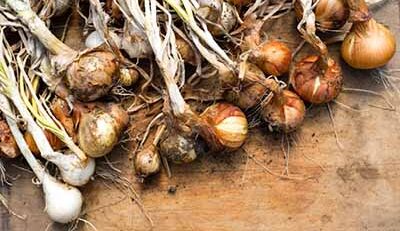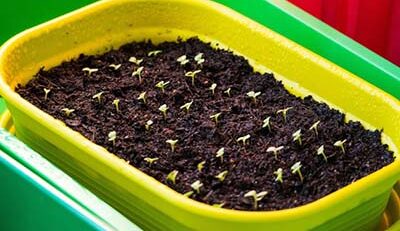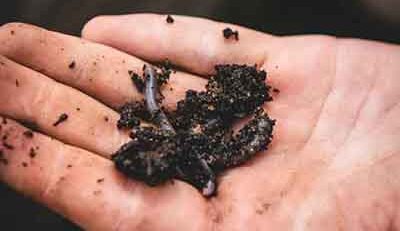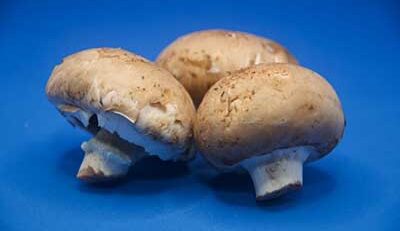How to Get Sap Off Hands
Introduction
Working outdoors with plants and trees is rewarding, but it can come with the sticky challenge of dealing with sap. Knowing how to get sap off hands effectively can save time and frustration. This guide will explore what sap is, the various types you may encounter, and easy ways to remove it using household items. We’ll also look at some handy tips for keeping your hands sap-free in the first place.
What is Sap and Why is It So Sticky?
Sap is a fluid found in many plants and trees, composed of water, sugars, minerals, and various plant nutrients. It plays an essential role in transporting these nutrients throughout the plant, similar to blood in animals. The stickiness of sap comes from its high sugar content and resinous properties. When exposed to air, sap can quickly harden, making it difficult to remove from skin, clothing, and other surfaces.
Different types of plants produce varying kinds of sap. For instance, pine sap is known for being particularly sticky and tough to clean off. If you’re dealing with sap while tending to indoor window plants or landscaping outside, having a few tricks on hand can make all the difference.
Different Ways to Get Sap Off Hands
When learning how to get sap off hands, you’ll find there are a number of ways to go about it. Here are some effective methods that use items you likely already have in your home:
1. Using Oil-Based Products
One of the best ways to tackle sap on hands is with oil-based products like cooking oil, peanut butter, or even margarine. Rub a small amount of oil onto your hands where the sap is, massage it in for a minute or two, then rinse thoroughly with soap and water. The oils work by breaking down the sticky resin, making it easier to wash away.
2. Rubbing Alcohol or Hand Sanitizer
Rubbing alcohol is another effective solution for getting sap off hands. Apply a small amount of rubbing alcohol or hand sanitizer to the sap-covered area, let it sit briefly, then wipe it off with a cloth. This method works particularly well because the alcohol breaks down the sap’s adhesive properties. Be sure to rinse your hands with soap and water afterward to remove any residue. This technique is also useful for other sticky substances, like when you want to shine plant leaves naturally without residue.
3. Baking Soda and Water Paste
If you don’t have oil or rubbing alcohol on hand, a baking soda and water paste can do the trick. Simply mix equal parts of baking soda and water to create a paste, rub it onto the sap-stained areas, and rinse it off with warm water. Baking soda acts as a gentle abrasive, helping lift sap without being too harsh on the skin.
Using Pantry Staples to Remove Sap
Your kitchen pantry likely holds a few other solutions for how to get sap off hands without needing specialized cleaners. Here’s a look at some common items that work wonders:
- Vinegar: Dabbing a little vinegar on the sap and letting it sit for a few minutes before rinsing is effective. Vinegar’s acidic properties help dissolve sap.
- Lemon Juice: Lemon juice is acidic, just like vinegar, and can help break down sap. Rub a few drops on your hands, then rinse off with soap and water. Lemon juice is a handy option to keep in mind while gardening and tackling common garden pests.
- Salt and Water Scrub: Make a quick scrub using salt and a small amount of water to help remove stubborn sap. The salt adds grit, which can break down the sap and make it easier to wash away.
Using Natural Oils to Break Down Sap
If you’ve tried soap and water without much success, natural oils can be a powerful alternative for removing sap. Oils like coconut, olive, or vegetable oil effectively break down the sticky compounds in sap, making it much easier to wipe away. Simply apply a few drops of oil directly onto the sap-stained area, gently rubbing it in with your fingers or a soft cloth. Let it sit for a minute or two to loosen the sap. Afterward, use a towel to wipe off the oil and sap mixture, followed by washing your hands with warm soapy water. Many gardeners find this method quick and efficient, especially after handling plants that secrete thicker sap types, like pine or fir. For other natural solutions, you might also consider learning how to shine plant leaves naturally to maintain healthy, sap-free leaves.
Secret Tips for Removing Stubborn Sap
Sometimes, sap is extra-stubborn, and you’ll need a few additional tricks for thorough removal. Here are some advanced hacks on how to get sap off hands when nothing else seems to work:
- Peanut Butter: The oils in peanut butter can work similarly to other oils. Just apply a dab, rub it over the sap-stuck areas, and then rinse off.
- WD-40 Spray: While usually a tool-cleaning product, WD-40 can also help lift sap from your skin. Spray a small amount on the sap, let it sit for a few seconds, then wipe it off with a cloth. Just be sure to wash your hands afterward.
- Toothpaste: Some toothpaste formulas have mild abrasives, making them perfect for scrubbing off sap without harming the skin.
Different Types of Sap and Their Challenges
Understanding the type of sap you’re dealing with can help you pick the best method for how to get sap off hands. Here are a few common types:
- Pine Sap: Known for being extremely sticky and tough to remove. Oil-based methods tend to work best.
- Maple Sap: Easier to remove due to lower resin content. Baking soda and water usually do the trick.
- Citrus Sap: The resin content in citrus trees makes the sap sticky but manageable with vinegar or lemon juice.
Knowing the type of sap you’re dealing with can make removal quicker and more effective.
How to Protect and Avoid Sap on Hands
Prevention is key. Here are some practical tips for avoiding sap buildup while gardening:
- Wear Gloves: Opt for thick, disposable gloves that are resistant to resin. This can prevent sap from sticking to your hands in the first place.
- Handle with Tools: When pruning, use clippers or pruners instead of bare hands.
For even better protection, consider using barrier creams before you start handling plants that produce sap. This way, the sap won’t adhere as strongly, and you can rinse it off more easily with water alone.
Aftercare: How to Soothe Skin After Sap Removal
After you’ve managed to get sap off your hands, you may notice that your skin feels a bit dry or even irritated. Removing sap often involves using agents like rubbing alcohol, vinegar, or even scrubbing with abrasive materials, which can strip away the natural oils on your skin. Here are a few simple aftercare tips to keep your skin feeling comfortable and healthy:
- Moisturize: Sap-removal agents can dry out your skin, so make sure to rehydrate it. Use a rich, nourishing hand cream, or consider natural options like coconut or olive oil, which not only moisturize but also help to lock in moisture. Shea butter is another excellent option for deep hydration.
- Aloe Vera Gel: If your skin feels particularly sensitive after sap removal, aloe vera gel is a great natural remedy. It’s cooling, soothing, and has anti-inflammatory properties that can help reduce redness or irritation—especially useful if you’ve been working with rough plants or abrasive scrubs.
- Avoid Hot Water: It can be tempting to rinse your hands with hot water after removing sap, but try to stick to lukewarm water. Hot water can dry out your skin even further, so opt for a gentle, lukewarm rinse instead. For an extra boost, finish with a cold-water splash to help seal in moisture.
- Hand Masks for Extra Care: If your skin still feels rough or dry after cleaning, you might benefit from an occasional hand mask. You can make a DIY mask with honey, yogurt, or avocado for deep hydration, or try a pre-made mask designed to rehydrate and replenish skin.
Extra Tips for Cleaning Sap from Other Surfaces
While our focus here is on how to get sap off hands, sap can also get onto clothing, gardening tools, and surfaces. If you need to remove sap from clothes or try rubbing alcohol. For surfaces like floors or furniture, rubbing alcohol, vinegar, or oil-based products can help lift sap stains effectively.
Final Thoughts on Getting Sap Off Hands
Dealing with sap is part of the experience when you’re gardening, trimming trees, or even arranging indoor plants with sap-producing leaves. Knowing a few go-to hacks for how to get sap off hands can make all the difference between an enjoyable project and a sticky mess. From the variety of sap types you might encounter to the reliable household remedies you can use, each tip we’ve covered here is intended to make your cleanup routine fast and effective. Try to keep a few items like rubbing alcohol or natural oils nearby, especially if you’re working with particularly sticky trees, like pine. And don’t forget, preparation goes a long way! Wearing gloves, washing promptly, and keeping a simple kit of sap removers at hand can make post-gardening cleanup a breeze. With these strategies, you’ll be able to keep your hands sap-free and enjoy your time with plants, whether you’re pruning outdoor trees or nurturing indoor window plants in your home!










Leave a Reply